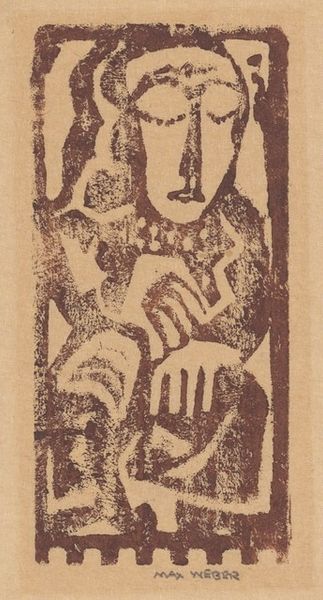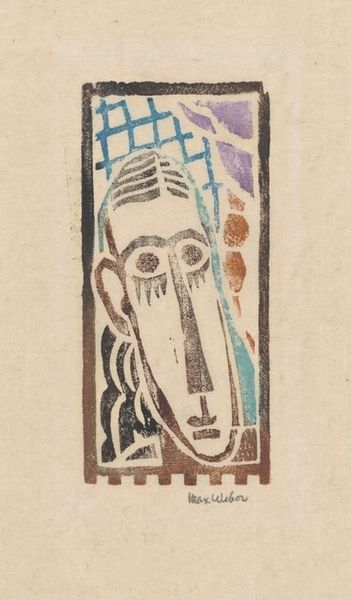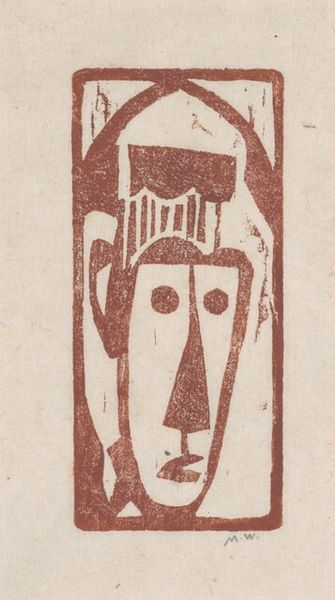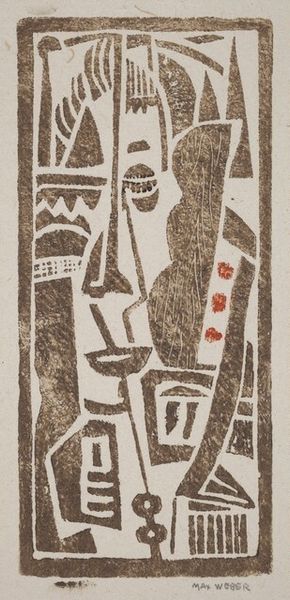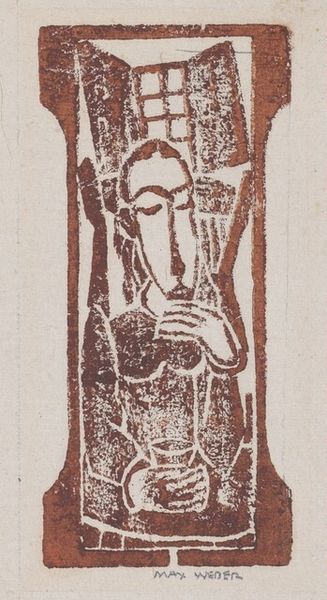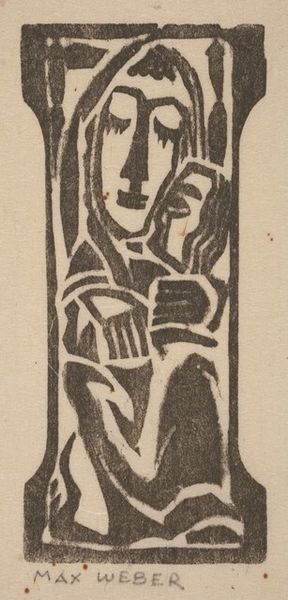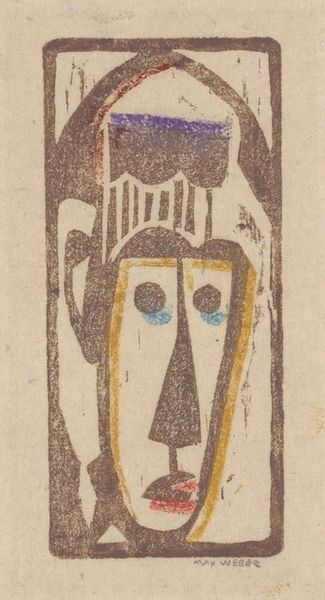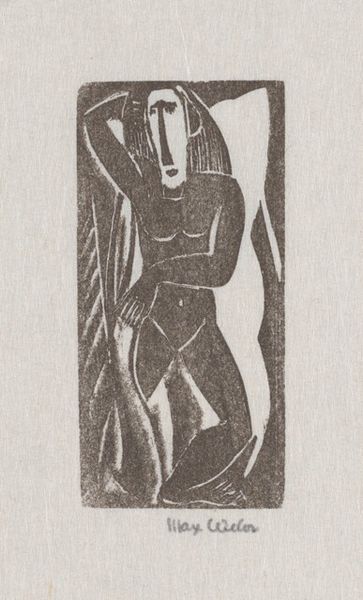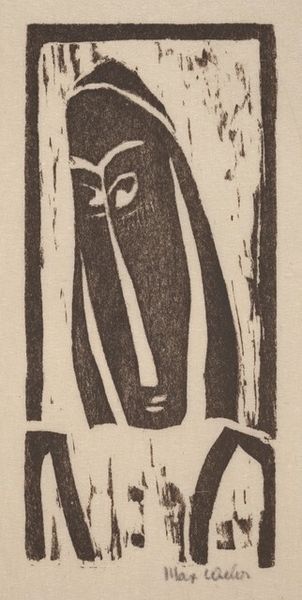
print, woodcut
#
portrait
# print
#
figuration
#
coloured pencil
#
expressionism
#
woodcut
Dimensions: image: 10.8 x 4.9 cm (4 1/4 x 1 15/16 in.) sheet: 23.8 x 16.8 cm (9 3/8 x 6 5/8 in.)
Copyright: National Gallery of Art: CC0 1.0
Editor: Here we have Max Weber's "Mask," a woodcut print created around 1919 or 1920. The first thing that strikes me is how primitive it feels, like an ancient carving, yet there's a modern sensibility to the geometric abstraction. What do you see in this piece? Curator: I see a confluence of traditions, ancient and modern, Eastern and Western. Notice the stark geometry of the face, almost Cubist in its reduction of form, but think about the long cultural history of masks. They aren’t simply representations; they embody spirits, roles, powers. Weber isn't just depicting a mask; he's invoking that deep history, that potent symbolism. Editor: So you’re saying the abstract nature doesn't negate the power of the mask as a symbol, but perhaps enhances it? Curator: Precisely! Consider how the eyes are represented: simple circles. This draws us in, forcing us to project our own emotions, our own selves, onto the figure. The mask becomes a mirror, reflecting back our own inner landscape. Editor: I never thought about it like that, as a mirror. The headdress looks vaguely ecclesiastical, perhaps a mitre or some other religious head covering... does this link the image to religious history, or spiritual practice? Curator: Good eye. The headdress definitely carries symbolic weight, a cultural signifier. Weber was deeply engaged with spiritual themes. It suggests authority, perhaps, or a link to ritual. But in the context of a 'mask,' the hat serves a cultural, or aspirational purpose – an added layer of performance that conceals and reveals something simultaneously. Is it a holy person or an impostor? Editor: It seems like there's so much packed into such a seemingly simple image. I’ll certainly view masks differently now. Curator: Yes, Weber encourages us to actively engage, question, and remember how images participate in shaping our sense of self and culture.
Comments
No comments
Be the first to comment and join the conversation on the ultimate creative platform.
